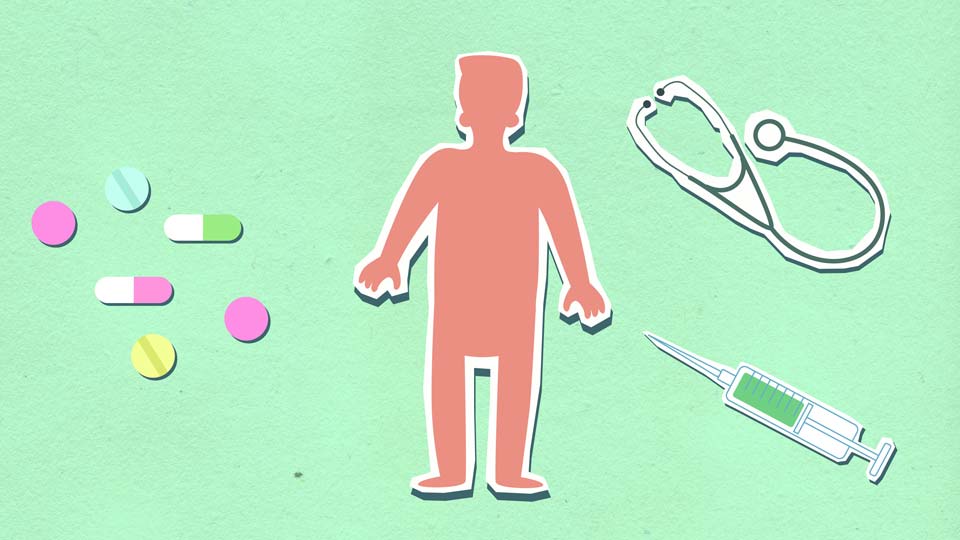8 Powerful Patient Engagement Strategies for Pharmacies
Pharmacy owners are passionate about their community’s health and quality of life. However, wellness is a two-sided effort, with significant responsibility resting on how invested patients are in improving their own well-being and lifestyle. Data from the Centers for Disease Control and Prevention (CDC) shows that increased patient engagement leads to better outcomes. So, what patient engagement strategies should pharmacy professionals utilize in 2023 to facilitate a higher degree of involvement?
In this guide, we’ll cover everything you need to know about patient engagement techniques and why they are important. We’ll also outline eight effective strategies that can be used to improve patient engagement for physician practices, pharmacies, and clinical programs alike.
What is Patient Engagement?
An engaged patient plays an active role in their treatment and recovery. Ultimately, the extent of engagement comes down to the mindset of each individual patient. There are several patient engagement activities that can increase a person’s drive to work toward better health outcomes. These strategies promote patient partnerships with their pharmacists and primary healthcare providers.
A well-informed patient is an involved and adherent patient. The key to any successful healthcare patient engagement strategy is to empower people with the information they need to make the best decisions. Often in healthcare, the patient experience is an afterthought. Adopting effective patient engagement strategies changes that and gives people the confidence to play a more active role in their health and wellness journey.
Why is Patient Engagement Important?
There are several reasons why pharmacy team members and managers should care about patient engagement. We already know that when pharmacists have higher patient engagement, outcomes are improved. But there’s much more to it than that.
Below is a list of additional benefits that stem from utilizing effective patient engagement techniques.
Drive Prescription Refills
A study conducted by the National Community Pharmacists Association (NCPA) in partnership with the Arkansas Pharmacists Association demonstrated that providing more high-touch interactions through Appointment-Based Medication Synchronization (ABMS) made patients 2.57 times more likely to stay adherent to their medications.
Patients participating in Medication Synchronization programs have improved adherence and prescription refill rates. Regularly refilling prescriptions on time also improves health outcomes for chronic disease states such as high blood pressure, diabetes, and dyslipidemia.
Reduced Waste
Drug manufacturers and pharmacies often spend significant sums of money printing leaflets and pamphlets detailing medications, treatments, and aftercare instructions. Without encouraging the full use of these beneficial materials through patient engagement strategies, healthcare information is more likely to go ignored and unused. When printed medication resources are included in your patient consultation, they serve as a visual reminder of that patient-provider interaction. As a result, the print resources will more likely be referred to for its reminders instead of being trashed.
Eliminate Potentially Preventable Readmissions (PPR)
When a provider-patient relationship has been established, the patient is more often to comprehend and interpret information that may be critical to their disease progression or medication regimen. The result — patients are more invested in their health and disease morbidity and hospitalizations are markedly reduced. In contrast, a transactional provider-patient relationship may cause this information to be overlooked leading to adverse drug events and disease complications.
Improve Satisfaction and Retention
When patients actively engage with their healthcare providers, they feel respected, valued, and heard. This makes them more satisfied with the service they receive and much more likely to remain loyal rather than switching to an alternative provider or dispensing pharmacy. Patients may not always recall what you say, but they will remember how you made them feel. When your patient has a connection to you and your pharmacy team, they will stay where they are cared for regardless of the savings coupons your competitors may use to try and lure them.
Improve Long-Term Health
Patient engagement leads to better long-term health outcomes. Simply put, when people are proactive in managing their health and comfortable approaching healthcare providers for information and advice, they:
- Seek treatment sooner.
- Address signs and symptoms earlier.
- Act before illnesses and diseases progress further.
Reduced Costs
The best patient engagement strategies are coupled with an investment in technology to facilitate smoother scheduling, billing, and reimbursement. This initial expense typically leads to an overall reduction in costs because:
- Keeping patients engaged through regular contact usually requires fewer visits.
- Scheduling more efficiently allows you to see more patients per day.
- Sending automated reminders decreases your no-show rate.
- Alerting electronically for follow-up appointments can be easily automated.
- Managing reimbursement schedules is made easier by your software provider.
- Utilizing one cloud-based system for your clinical and administrative needs reduces the time spent searching drug codes and prescription numbers.
8 Effective Patient Engagement Strategies
Although sometimes challenging, patient engagement activities are integral in improving overall health while simultaneously reducing the burden placed on pharmacies.
Not sure where to start? Here is a comprehensive list of patient engagement examples and strategies you could implement in your business.
1. Conduct Patient Segmentation
Breaking your customer base down into various patient segments is an essential first step in identifying different groups and pinpointing their needs so you can develop a plan to meet them — and potentially even expand your customer base at the same time. There are a few different ways you can segment patients:
- By age range – The easiest way is likely to divide your patient base into groups of children, adults, and seniors.
- By risk or diagnosis – Grouping together patients with similar needs helps you to develop plans that are more tailored towards their specific requirements.
- By coverage – There’s little point in offering medications and treatments that patients can’t afford or are not covered by their healthcare plans.
2. Regularly Review Employee Training
Most pharmacists consider themselves scientists first and customer service representatives second. However, most patients — particularly nervous ones — appreciate the consistency of a friendly and familiar face when they visit your pharmacy. Plus, the majority of people prefer fast and hassle-free customer experiences.
To ensure optimal care and efficient service, pharmacy staff should receive regular training in:
- Patient interactions
- Medications and treatments
- Clinical best practices
- Software systems
- Reporting requirements
- Data access and sharing
- Pharmacy billing and reimbursement
3. Make Pharmacy Visits Less Intimidating
Medical appointments and pharmacy visits can be stressful. Going the extra mile to make patients feel more at ease on your premises is one of the most effective patient engagement strategies to ensure they keep returning. Specific examples include:
- Increasing comfort levels by improving the ambiance. Simple techniques like adding some tasteful artwork, playing relaxing music, providing more comfortable seating in the waiting area, and installing a water dispenser or charging sockets go a long way toward making patients feel more relaxed.
- Reducing anxiety by giving people an expected waiting time in busy periods. Sometimes, having patients wait is unavoidable. However, research shows that 80% of patients would be less frustrated if they knew how long their wait would be, and digital signage detailing queue status has been proven to reduce perceived wait times by up to 35%.
- Minimizing hassle by letting patients know exactly what to expect from their first point of contact. For example, rather than playing generic hold music on your call-waiting line, you could use your phone queue to provide valuable information that tells patients:
- What services you offer
- Your pharmacy location’s hours
- How to schedule an appointment online
- Which insurance policies are accepted
- Where to find new patient signup forms on your website
- What to bring to appointments (ID card, insurance documents, etc.)
4. Invest in Technology
Here at DocStation, we love technology and care deeply about how it can affect and improve people’s lives. We’re passionate about creating simple, easy-to-use pharmacy software that allows healthcare professionals to do what they do best while providing patients with a delightfully engaging experience.
Our robust pharmacy software will help streamline your workflow while promoting a unified approach to patient care. An upgrade to the technology offerings at DocStation paves the way for:
- Streamlining your pharmacy services
- Reducing laborious administrative tasks
- Keeping patients engaged with your pharmacy
- Reducing your no-show rate for follow-up visits
- Scheduling appointments and sending automatic reminders
- Collaborating and sharing data with other healthcare professionals
- Offering portals where patients can tap into healthcare resources
5. Educate Patients
It’s normal for patients to feel frightened or nervous about things they don’t understand. Dealing with their health, diagnosis, and treatment plan introduces a litany of medical terms with which they may be unfamiliar. When you engender patient understanding and trust, they will become more communicative with all of their healthcare providers, resulting in improved outcomes. An article published by The American Journal of Medicine established that patients were 67% more compliant with treatment when they received educational materials about their medications and therapies.
Traditionally, patients have relied on healthcare providers’ knowledge, training, and experience to manage their well-being. However, with increased education and understanding, patients can be invited to play a more active role in their outcomes by entering into shared decision-making about the various tests, medications, and treatments available to them.
6. Provide Continuous Care
Trust is one of the most significant barriers to patient engagement. Outcomes can therefore be significantly improved by actively building relationships built on reliability and dependability. That means keeping in touch with your patient base regularly — even when they don’t need your services. Whether it’s a monthly check-in, newsletter, or post-visit survey, it’s essential to demonstrate your ongoing commitment to your community’s healthcare needs beyond the walls of your physical storefront.
When healthcare providers make an effort to stay in contact, trust is established, making patients much more likely to adhere to their long-term care plans and be more proactive with unassociated preventative care measures. Therefore, continuous patient care can reduce further health complications, hospital admissions, and medical costs while simultaneously improving patient engagement and customer satisfaction scores.
7. Remove Barriers to Accessing Healthcare
Barriers to healthcare can be either physical or digital. For people who live in rural areas, virtual interactions can make healthcare more accessible. Remember that regardless of how cutting-edge any individual healthcare patient engagement strategy is, it must be accessible to everyone. That means using various digital communication channels to meet patients on their preferred platforms.
Of course, using every channel for every patient would be overwhelming. But by offering a range of options in your patient onboarding process, you can record preferences and tailor your communications to suit individual needs.
Some of the most popular communication methods for pharmacies include:
- Text
- Phone
- Video calls
- Social media
- Online messaging apps
- Patient portals
- Traditional mail
8. Track Your Metrics
We know — nobody finds data analysis particularly exciting. However, it’s impossible to know which of your patient engagement strategies has been worth the investment without tracking what works and what doesn’t.
If something is not measured, then it cannot be improved. Here are a few ideas for measuring the success of your patient engagement activities:
- Communication response rates – Current research puts the average patient response rate at around 70%.
- Patient Activation Measure (PAM scores) – PAM scores measure patient engagement on a 100-point scale.
- Patient Health Engagement (PHE) scale – The PHE scale measures patient engagement based on a range of patient-related, health professional-related and organization-related metrics, taking into account various social and community factors.
- Potentially Preventable Readmissions (PPR) – PPR measures unplanned and potentially preventable readmission rates within 30 days of discharge/treatment.
- Health outcomes – An increase in positive outcomes means you’re on the right track in driving increased patient engagement that leads to better overall health.
Boost Patient Engagement with DocStation
At DocStation, we specialize in helping pharmacies and health plans collaborate to improve patient engagement, outcomes, and minimize the total cost of care.
Our cloud-based pharmacy management software can streamline your back office operations and overcome customer service issues by helping you:
- Define performance measures
- Manage provider networks
- Submit and track claims
- Manage billing processes
- Track outcomes
- Integrate with your EHR
- Measure return on investment (ROI)
All on one single platform. Ready to increase your patient engagement? Click here to request your free demo and get started today!
To learn more, visit our website today.
About DocStation
DocStation is a cloud-based care platform ushering in a new era of value-based healthcare. We partner with health plans and pharmacies to operate clinical programs at scale. Define performance measures, manage provider networks, leverage machine learning to optimize patient care, submit and track claims, track outcomes, integrate with your EHR, and measure ROI at your pharmacies. All on a single platform.






